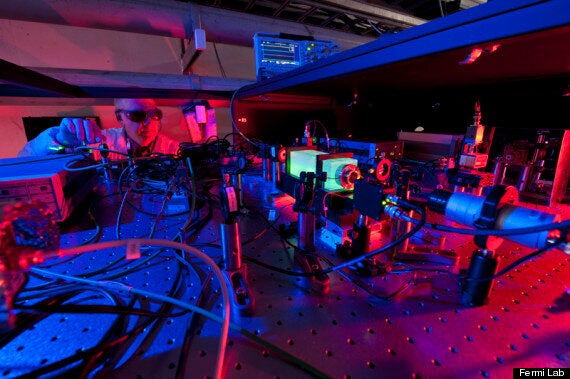Physicists working for the US government are to test if the universe is actually a 'two-dimensional' hologram.
Scientists at the US Department of Energy's Fermi National Accelerator Lab will collect data to answer some of the strangest questions that exist about, well, existence itself.
"If we see something, it will completely change ideas about space we've used for thousands of years," says Craig Hogan, director of Fermilab's Center for Particle Astrophysics.
The hologram theory suggests that while we perceive ourselves to be living in a 3D universe with time as a fourth dimension, the reality might be quite different.
Some scientists theorise that it could be possible for space-time to be 'encoded' in smaller dimensional packets, like pixels on a TV screen building to make an apparently clear image.
If true, this "space pixel" would be about 10 trillion trillion times smaller than an atom. That's small enough to make that particle-like thing subject to the same quantum mechanical rules as other sub-atomic particles. And that opens up interesting possibilities for new types of physics - and new ways to test if the theory is true in the first place. (And for the record, yes, this theory is much more complicated that we just implied. The inclusive complexity of particle physics is, generally speaking, difficult to explain in a sentence.)
In the new Holometer experiment, physicsts will tell if there are built-in limits to the information you can know about the location of objects.

With the holometer (above) - or holographic interferometer - Fermi physicists will test whether space itself is vibrating, which would imply a quantum effect and so lend weight to the idea of a holographic universe.
This "holographic noise" is tricky to find because it can be influenced or mistaken by other sources of vibration. For that reason the Holometer will test at an absurdly high frequency, so that normal vibrations wouldn't have time to make their effect felt.
"If we find a noise we can't get rid of, we might be detecting something fundamental about nature–a noise that is intrinsic to spacetime," said Fermilab physicist Aaron Chou.
"It's an exciting moment for physics. A positive result will open a whole new avenue of questioning about how space works."